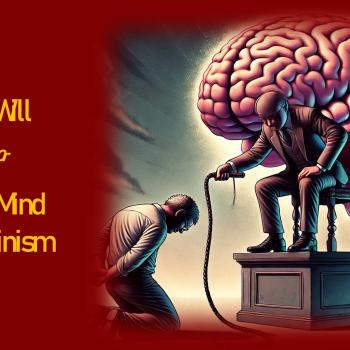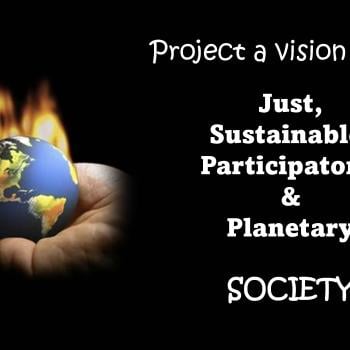The proleptic power of new creation
Jesus’ Resurrection as Prolepsis of New Creation
ST 4147 Miracles 7

In past posts in this Patheos series on miracles, we’ve asked inter alia whether the Easter resurrection of Jesus was historical. In this post we’ll ask: is it eschatological? My answer will be affirmative. The raising of Jesus from the dead by God on the first Easter is a prolepsis of the eschatological new creation. Therefore, Jesus’ resurrection has cosmic meaning.
In the previous post, “Is resurrection the ultimte miracle?,” we concluded: Rather than think that miracles break a law of nature, miracles actually break into nature with the laws of the new creation. Here we ask: what does this imply for creation and redemption?
In light of God’s promised new creation, I believe we can interpret each of Jesus’ healing miracles as a prolepsis, as a historical moment that incarnates ahead of time the eschatological consummation of all God’s work with creation.
Now, let’s stretch our theological speculations. I hypothesize that the eschatological new creation is God’s actual creation. The world we live in today is but a foreshadow or anticipation of the cosmos as God intends it. Only when all things are redeemed will they be created. Only when all strife and suffering ceases will we enjoy God. Only when all rifts are healed will God say, “behold, it is very good.”
Jesus’ healing miracles right along with his own resurrection, then, ontologically anticipate the reality that is yet to come. Establishing that miracle reports are historical—though a noble scholarly task, to be sure–is a paltry exercise compared to recognizing how healing miracles proleptically actualize ahead of time the eschatological new creation yet to come.[1]
Jesus’ Easter resurrection: both historical and eschatological

Wolfhart Pannenberg along with N.T. Wright after him render the Easter event historical. Here in a nutshell is their argument: the conviction of the early Christian church that Jesus rose from the dead can best be explained as a response to a genuine historical event that looks roughly like the New Testament describes.
“Thus the resurrection of Jesus would be designated as a historical event in this sense: If the emergence of primitive Christianity, which, apart from other traditions, is also traced back by Paul to appearances of the resurrected Jesus, can be understood in spite of all critical examination of the tradition only if one examines it in the light of the eschatological hope for a resurrection from the dead, then that which is so designated is a historical event, even if we do not know anything more particular about it. Then an event that is expressible only in the language of the eschatological expectation is to be asserted as a historical occurrence” (Pannenberg 1977, 98).
There is more to this argument. Here’s the key to grasping the significance of Jesus’ resurrection and, in turn, Jesus’ healing miracles. The power of God’s transformative future is exercised ahead of time in Jesus of Nazareth. N.T. Wright drives home the idea of prolepsis, even if he does not employ the term.
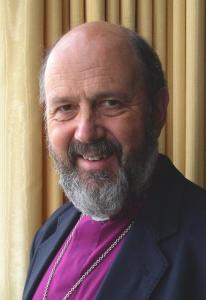
“The central Christian affirmation is that what the creator God has done in Jesus Christ, and supremely in his resurrection, is what he intends to do for the whole world–meaning by ‘world’ the entire cosmos with all its history” (Wright, Cosmic Future: Progress or Despair? 2007, 16-17) (Peters, The Future of Resurrection 2006).
Donghwi Kim rightly perceives that a Jesus miracle constitutes a prolepsis—a “foretaste”—of God’s eschatological redemption.
“From a theological standpoint…miraculous events observed in history appear to be exceptional, inexplicable, and law-transcendent events of the natural order and such events can be seen as ‘foretastes’ from the new creation to which new natural laws are retroactively applied” (Kim 2023, 436).
The ontological effect of the future on the present
Following Pannenberg, I affirm a retroactive ontology. God’s eschatological redemption of all things determines the reality of creation’s past and present (Peters, God–The World’s Future: Systematic Theology for a New Era 2015).
“We see the present as an effect of the future in contrast to the conventional assumption that the past and present are the cause of the future” (Pannenberg, Theology and the Kingdom of God 1969, 54).
Does God’s future effect or even determine the reality of our past and present? I respond affirmatively.
God creates from the future, not the past
God creates from the future, not the past. Really? Yes, really. But you might object saying, “I thought creation refers to what God did once upon a time back at the beginning, back in Genesis or the Big Bang.” Well, let’s think again phenomenologically (Peters, Redemption as Creation: The Future of Pannenberg’s Future 2021).
Oh yes, we are accustomed to assuming a closed cause-and-effect nexus of finite events. We place the cause in the past and the effect in the present. It follows that what exists in the present is the result of past causes.
When we think of the creation of the world, then, we look to the cosmic past. We look to the arche, to the beginning, to the point of origin. What we find back at the point of origin we call genesis. Common sense places creation at genesis.
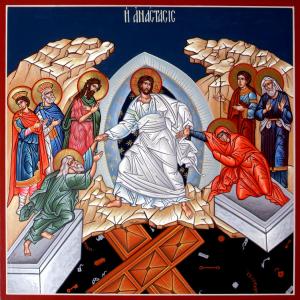
Is this adequate? Well, let us look once again. Just what does it mean to be? What does it mean to exist? Can we exist without a future? No. Without a future, we are not. If someone takes away our future, we drop from existence into non-existence. This is what death is, the loss of our future.
Here’s my ontological maxim: to be is to have a future. Let me restate this: to be is to have a future.
Here is the implication for the doctrine of creation: the way God gives being to creatures is to give them a future. Each moment, God gives the cosmos the next moment. God is moment by moment giving to all of realty its future. Without this future-giving on the part of God, all of reality would freeze up and cease. God “gives life to the dead and calls into existence the things that do not exist” (Rom.4; 17b) (Peters, Can we locate our origin in our future? Archonic versus epigenetic creation accounts 2022).
Only when the world is eschatologically redeemed will it be created. Then we will see that Jesus’ Easter resurrection and his healing miracles were prolepses of the new creation.
Conclusion
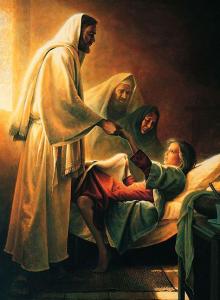
Jesus’ Easter resurrection provides the paradigmatic model for prolepsis. What happened to Jesus on the first Easter was a prolepsis of the new creation, an anticipation of the final resurrection that will include you and me. “Christ has been raised from the dead, the first fruits of those who have died” (1 Cor. 15:20). I believe the proleptic dimension of the Easter miracle has implications for creation and redemption.
N.T. Wright makes my central point forcefully.
“God creates the world in the light of its latter end, because it is only the end which decides the meaning of the things and beings with which we have to do in the present” (Wright, Evil and the Justice of God 2006, 96).
Or, to put it my way: God’s creative action within nature and within history is derived from the divine act of redeeming and creating the whole of the cosmos. The hinge event on which cosmic history swings is the Easter resurrection of Jesus Christ. This renders Jesus’ Easter resurrection both a historical moment and a prolepsis of history’s final event.
Where have we been? Where are we going?
Patheos ST 4141 How to see a miracle? Miracles 1
Patheos ST 4142 Two Healing Miracles for Sainthood. Miracles 2
Patheos ST 4143 Hume on Miracles. Miracles 3
Patheos ST 4144 Is Special Divine Action miraculous? Miracles 4
Patheos ST 4145 Jesus’ Nature Miracles. Miracles 5
Patheos ST 4146 Is resurrection the ultimate miracle? Miracles 6
Patheos ST 4147 The proleptic power of new creation. Miracles 7
Patheos ST 4148 Paul Lange on Miracles. Miracles 8
Patheos ST 4149 C.S. Lewis on Miracles. Miracles 9
▓
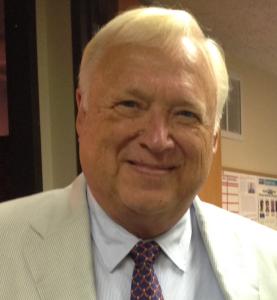
Ted Peters (Ph.D., University of Chicago) is a public theologian directing traffic at the intersection of science, religion, and ethics. Peters is an emeritus professor at the Graduate Theological Union, where he co-edits the journal, Theology and Science, on behalf of the Center for Theology and the Natural Sciences, in Berkeley, California, USA. He recently co-edited Astrobiology: Science, Ethics, and Public Policy (Scrivener 2021) as well as Astrotheology: Science and Theology Meet Extraterrestrial Intelligence (Cascade 2018). He also co-edited Religious Transhumanism and Its Critics (Lexington 2022) and The CRISPR Revolution in Science, Ethics, and Religion (Praeger 2023). Peters is author of Playing God: Genetic Determinism and Human Freedom (Routledge, 2nd ed, 2002) and The Stem Cell Debate (Fortress 2007). See his blogsite [https://www.patheos.com/blogs/publictheology/] and his website [TedsTimelyTake.com].
▓
Notes
[1] I get this from the NT Jesus. And from Wolfhart Pannenberg’s interpretation of Jesus. Others such as Teilhard de Chardin, Paul Tillich, Carl Braaten, Robert John Russell, Jűrgen Moltmann, and N.T. Wright help round out this picture of retroactive ontology.[2] Resurrection is not merely a return to one’s prior life. It includes healing. It includes perfection. Jesus’ healing of sick or deformed persons proleptically anticipates their resurrection. “The perfect resurrected body began to be described using the language of healing and cleansing….[this] is tied to a particular view of salvation history and functions both as the completion of Jesus’ healing ministry and as proof of the removal of primordial sin. The salvation of all flesh is completed with the eradication of bodily deformity” (Moss, 2011, 991).
Works Cited
Kim, Donghwi. 2023. Miracles Reconsidered: A Fresh Assessment from Philosophy, Science, and Theology. Graduate Theological Union Ph.D. dissertation: unpublished.
Moss, Candida. 2011. “Heavenly Healing: Eschatological Cleansing and the Resurrection of the Dead in the Early Church.” Journal of the America Academy of Religion 79:4 (December) 991-1017.
Pannenberg, Wolfhart. 1977. Jesus–God and Man. Louisville KY: Westminster John Knox.
—. 1969. Theology and the Kingdom of God. Louisville KY: Westminster John Knox.
Peters, Ted. 2022. “Can we locate our origin in our future? Archonic versus epigenetic creation accounts.” HTS 78:2 1-8.
—. Ted. 2015. God–The World’s Future: Systematic Theology for a New Era. 3rd. Minneapolis MN: Fortress Press.
_ . Ted. 2021. “Redemption as Creation: The Future of Pannenberg’s Future.” In Theology for the Future: The Enduring Promise of Wolfhart Pannenberg, by ed Andrew Hollingsworth, 159-182. Lnaham MA: Lexington: chrome-extension://efaidnbmnnnibpcajpcglclefindmkaj/https://tedstimelytake.com/wp-content/uploads/2021/10/2021-Redemption-Creation-Pann.pdf.
_ . Ted. 2006. “The Future of Resurrection.” In The Resurrection: John Dominic Crossan and N.T. Wright in Dialogue, by ed Robert Steward, 149-170. Minneapolis: Fortress.
Wright, NT. 2007. “Cosmic Future: Progress or Despair?” In From Resurrection to Return: Perspectives from Theology and Science on Christian Eschatology, by Christine Ledger, and Stephen Picard, eds James Haire, 5-31. Adelaide: ATF Press.
—. 2006. Evil and the Justice of God. London: SPCK.
—. 2003. The Resurrection of the Son of God. Minneapolis MN: Fortress.





